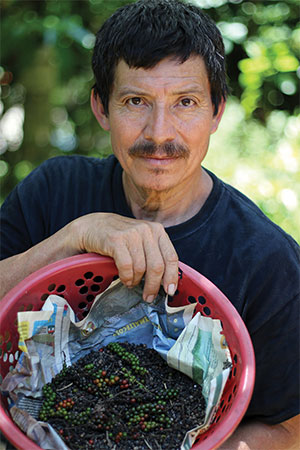Scaling Up Migratory Bird Conservation: A New Approach?
What if bird conservation could generate revenue?
While there is more to be learned about the threats facing many species of migratory birds, we already know enough to target conservation work in ways that will help some of the fastest-declining species. For example, species such as the Wood Thrush and Long-billed Curlew face habitat loss and degradation on both breeding and wintering grounds, across large areas of habitat.

How can we deliver conservation at a scale that will turn their populations around? We will ultimately need to positively influence millions of acres of land through conservation and restoration. In the United States, we have some programs, including Farm Bill conservation incentives, that are large enough to significantly influence bird populations at scale. Outside the U.S., though, few programs provide dedicated funds for migratory birds, and Latin American governments are often already at full stretch trying to conserve their existing parks and other protected areas.
But what if bird conservation could generate revenue? ABC staff are piloting a new approach to habitat restoration to see if we can actually generate revenue from bird-friendly habitat management. For example, a North Dakota ranching family might choose to move their herd around the ranch, helping to create a diverse grassland for Bobolinks and Long-billed Curlews, later selling their top-quality beef at a premium.
I have already seen some smallscale “bird and business ventures” first hand, and ABC is now working with landowners to develop pilot projects that could be taken to scale. But can we step it up a notch or two beyond this? What if we were to encourage investment in such projects by private capital: funding habitat restoration and getting paid back with interest? In Central America, where many of our migrant songbirds winter, forest loss is severe, and we know there is not currently enough philanthropic or government funding to turn the situation around. ABC is piloting a program in Guatemala that provides bridge funding for landowners to move from virtually sterile pasture to shady, bird-rich chocolate, black pepper (photo), cardamom, and mahogany plantations — in places that provide excellent habitat for long-distance migrants such as the Wood Thrush.
By piloting test projects like this, ABC hopes to learn how to develop a bird-friendly agroforestry operation with the potential to generate returns for investors, and which also provides proof of concept on the financial, legal, and logistical protocols that larger investors would expect. ABC recently signed its first contract to support a habitat restoration project designed to pay us back with interest. In our case, we will reinvest in more habitat protection. What would you do? Are you intrigued? If you are, please stay tuned, as I will report further on what we discover!
Photo: Don Francisco Lopez, a Guatemalan landowner experimenting with a more bird-friendly approach to farming with the help of ABC and local partners. Credit: Michael J. Parr
 | Michael J. Parr is President of American Bird Conservancy. |


















































